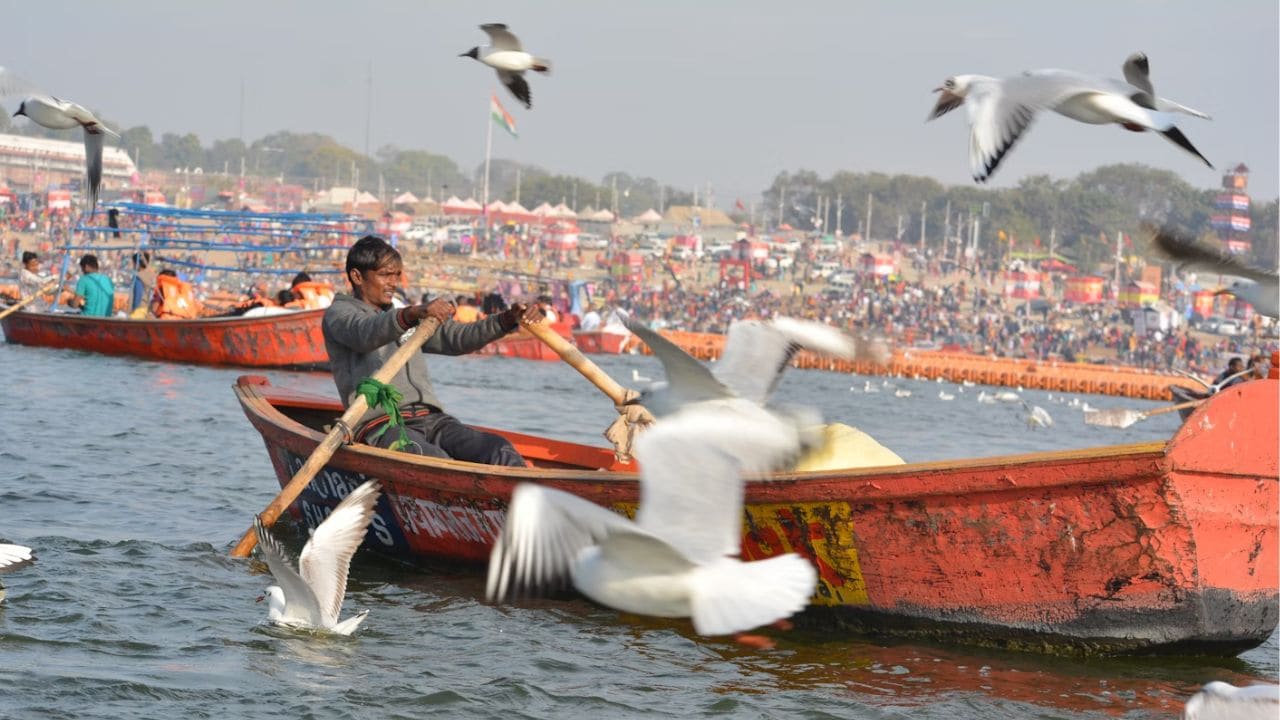As the Maha Kumbh 2025 approaches, marketers are ramping up their efforts to tap into the unprecedented potential of the world’s largest religious gathering, aiming to bolster brand recognition and engage with millions of devotees.
Scheduled to take place from January 13 to February 26, 2025, in Prayagraj, Uttar Pradesh, the Maha Kumbh is set to be a sprawling spectacle. The event, which will unfold over 45 days, is projected to attract an estimated 400 million people. With a staggering budget of approximately Rs 6,000 crore — a significant increase from the Rs 1,100 crore allocated for the 2012 gathering — the Kumbh’s scale has expanded accordingly. The venue has been enlarged to 4,000 hectares, up from 3,200 hectares during the 2019 event.
Beyond its spiritual importance, the Maha Kumbh has emerged as a key economic opportunity. Experts suggest that for businesses, the event represents a prime moment for consumption and engagement, positioning it as a unique marketing platform amidst the vast, diverse crowd of devotees.
‘Marketing at Maha Kumbh mela’
According to Rahul Tekwani, Managing Partner Branding Edge, “The Maha Kumbh 2025 presents a golden opportunity for consumer brands to connect with the masses. As the first major event post-COVID (the previous Maha Kumbh in 2021 was impacted by the second wave), it is expected to draw an audience of over 25 crore people.”
Tekwani said Maha Kumbh will particularly appeal to low-ticket consumer brands such as bottled water companies like Bisleri, beverage manufacturers, and pharmaceutical players. Additionally, local brands from Uttar Pradesh, especially those in the real estate sector, are likely to leverage the platform as the state moves towards achieving the milestone of a $1 trillion economy.
Read more: Roti Reminders to Clapping Gloves: Most memorable brand campaigns at Kumbh Mela
Vritti Solutions and Mindwave Media, official licensees for advertising at the Prayagraj Kumbh Mela, told Storyboard18 that both large and small brands have ample opportunities to capitalize on the event for marketing. With its immense reach and diverse audience, the Kumbh Mela offers a unique platform for brands to engage with millions of attendees through a range of strategic advertising methods.
Smaller brands, according to industry experts, can make a tangible impact by focusing on practical contributions, such as sponsoring hygiene kits, ORS packets, maps, or uniforms for sanitation workers. These initiatives provide essential support while enhancing brand visibility in a meaningful way.
It is not just a spiritual aperture but a laboratory for test marketing
Larger brands, by contrast, can amplify their presence by investing in more substantial infrastructure projects. These might include setting up brushing and handwash zones, organizing Ayurvedic health camps, establishing mobile charging stations, or sponsoring battery-operated vehicles for the elderly. Additionally, brands could fund refreshment and recreation zones for sanitation workers or eco-friendly women’s changing rooms.
As Rajesh Radhakrishnan, co-founder and CMO of Vritti Solutions, points out, bigger brands also have the opportunity to back more sophisticated initiatives, such as RFID-based crowd management, lost-and-found centers, and cashless payment systems — further cementing their role in shaping the event’s success.
Radhakrishnan emphasized that by integrating brands into the spiritual journey of the pilgrims, companies can create enduring and meaningful touchpoints that go far beyond conventional advertising. This approach not only fosters a deeper connection with the audience but also aligns the brand with the profound cultural and emotional significance of the event, leaving a lasting impression long after the Kumbh Mela concludes.
“Any brand targeted at Bharat today wants a piece of the action at the Maha Kumbh where 400 million visitors are expected. So it is not just a spiritual aperture but a laboratory for test marketing, flavour testing, sampling, and more. Marketing to Haj pilgrims has been done for decades. The Maha Kumbh, with its mind-blowing attendance, is now a magnet for consumer promotion too,” Dr. Sandeep Goyal, Chairman of Rediffusion said.
‘Marketing spends for brands’
The marketing spending at the Kumbh Mela varies widely based on the scale and scope of activation. According to Vritti Solutions’ Radhakrishnan, brands can start with investments as low as Rs 5-10 lakh, securing LED screen advertisement spots across key locations. Besides, spending can run into several crore for comprehensive 36-degree campaigns, including infrastructure sponsorship, digital activations, and DOOH strategies.
To stand out from the crowd, Tekwani said brands need to connect with the real Bharat and not just India.
“Using vernacular languages in campaigns helps to create a deeper emotional connection and build trust with consumers. Understanding the history and religious sensitivities related to the Kumbh is also crucial. Brands must approach their messaging with care and respect, ensuring they don’t unknowingly offend or misrepresent religious sentiments”.
Brands must prioritize value-driven initiatives over conventional advertising. Radhakrishnan suggested that focusing on practical contributions such as sponsoring transportation aids, offering health services, or setting up rest zones, can help brands create genuine connections with pilgrims.
‘ROI for brands’
Brands participating in Kumbh Mela often see a dual-layered return on investment (ROI), which is immediate visibility among millions and long-term goodwill.
According to Radhakrishnan, “Past events have shown that brands in FMCG, healthcare, steel & cement, telecom, paints, auto sector have experienced a substantial rise in rural market penetration post-Kumbh”.
ROI is best calibrated by the viralilty of the idea, the chairman of Rediffusion added, every brand tries more and more interesting gimmicks – some succeed, most don’t.
Read more: Shreyas Media wins advertising rights for Maha Kumbh mela 2025
